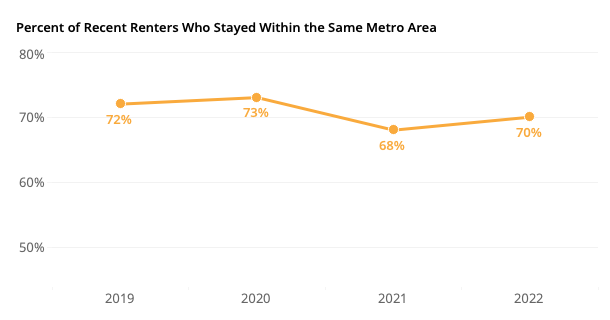As affordability constraints persist nationwide, upfront costs for renting can be a major burden that could put the cost of moving for many out of reach. New research shows renters of color are more likely to report paying these upfront costs, and oftentimes, the fees are even higher.
According to Zillow's Consumer Housing Trends Report, the typical Black, Latinx and Asian American Pacific Islander (AAPI) renter all reported spending $50 per rental application while white renters reported paying $35.

Zillow data indicates that the average renter who used Zillow Applications in 2022 applied for at least three rentals. The typical (median) recent renter submitted 2 applications. For those that paid an application fee (68%), the typical amount was between $40 and $59. Most recent renters (87%) also reported paying a security deposit — typically $500 to $999 among renters that paid one. Application fees and security deposits follow many similar trends: renters in urban and suburban areas, renters of color, younger renters, and renters in regions with the most expensive rental markets are all more likely to pay an application fee and/or a security deposit, and those upfront costs tend to be higher.
In addition to the higher amount spent, Black and Latinx renters were nearly twice as likely to report submitting five applications or more before securing a rental. Some 38% of Black and Latinx renters report submitting five or more applications, compared to 21% of white renters.
"Monthly rent prices are nearly the highest they've ever been, and unfortunately for so many people, finding a place to rent comes at an even higher cost," said Manny Garcia, a population scientist at Zillow. "We so often hear about the benefits of renting and the flexibility it offers, but disparities persist, and many renters of color aren't granted the same mobility as others because of higher upfront costs."
Application fees are not the only upfront costs to consider when renting. Once a rental is secured, nearly 85% of renters report putting down a security deposit. In 2022, the typical security deposit reported was between $500 and $999. This means that for renters who are already struggling financially, such as the 38% who said they couldn't afford an unexpected expense of $1,000 in 2021, security deposits could be a significant obstacle to signing a new lease.

The financial burden is often greater for renters of color, who are more likely to report paying a more expensive security deposit: 39% of Latinx and 43% of AAPI renters paid at least $500 for their deposit, and 22% of Latinx and 30% of AAPI renters paid at least $1,000. Given these affordability constraints, it's important for renters to be aware of their rights in the communities where they are searching.
Just over half of renters are non-Hispanic white or Caucasian (56%), smaller than the overall share of the U.S. adult population that is white (63%). Meanwhile, some 12% of U.S. adults identify as non-Hispanic Black or African American, while 20% of overall renters are Black. The largest share of renters live in the South (39%), followed by the West (25%) and Midwest (21%). The smallest share lives in the Northeast (15%).
Renters tend to have lower incomes than the U.S. population overall. The annual median household income among renters is approximately $42,500, compared to the overall national median of $67,500. Renters also tend to have a similar level of education to the overall population of U.S. household decision makers, as some 36% of renters have at least a four-year degree — similar to 34% of overall U.S. household decision makers.
When asked how far they moved, the largest share of recent renters said they stayed in the same city, but changed neighborhoods (40%). About one in ten (11%) reported staying in the same neighborhood. The smallest share (3%) moved from abroad.
To read the full report, including more data, charts and methodology, click here.

 DSNews The homepage of the servicing industry
DSNews The homepage of the servicing industry









